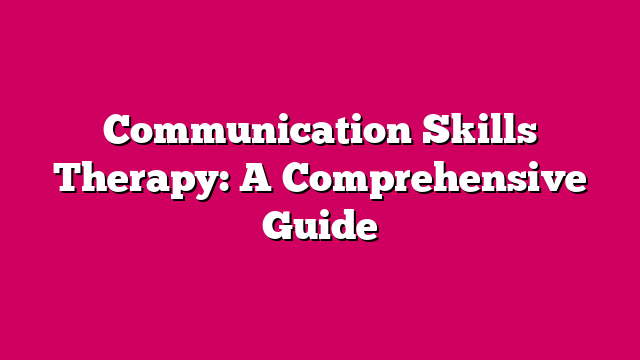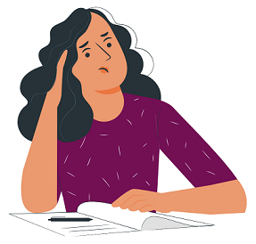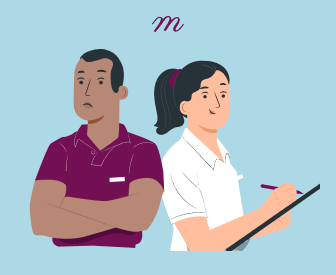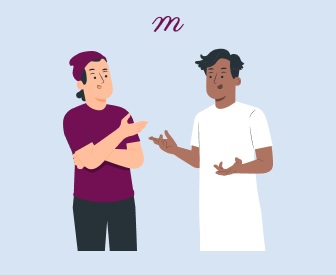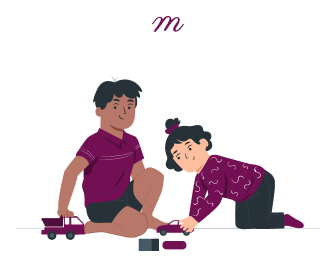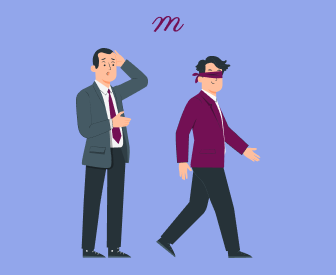Have your progress notes written for you automatically
In the context of mental health, communication skills therapy refers to the abilities individuals utilize to express their feelings, thoughts, and emotions effectively while also understanding the verbal and non-verbal messages conveyed by others. These skills include:
- Clarity: Ensuring thoughts and feelings are articulated clearly.
- Empathy: Fostering an understanding of others’ feelings and perspectives.
- Assertiveness: Expressing needs and boundaries effectively.
- Non-verbal Cues: Understanding body language and tone of voice.
- Listening: Engaging in active listening to enhance understanding and empathy.
- Conflict Resolution: Addressing conflicts and misunderstandings constructively.
Enhancing communication skills is crucial for effective therapy, fostering strong interpersonal relationships, and deepening self-awareness.
Importance of communication
All human beings are social beings, which means that we thrive on interactions with others. This interaction is forged and strengthened by communication. “Communication is the exchange of information between two or more people. There are many different ways that people exchange information including verbal, written, and/or non-verbal (body) language. Communication skills give you the ability to effectively and efficiently convey your thoughts and ideas.” (Saavedra, n.a)
The importance of communication skills therapy lies in the benefits of it- it is a source of psychological relief to be understood and feeling heard, there is a sense of accomplishment in a command being carried out, and it could be vital to develop a sense of motivation. Another reason for the importance of effective communication skills is the ease it provides in everyday life- it enables balancing different roles.
Barriers to Effective Communication
- Childhood Experiences
For many people, communication skills might be a problem. This could be due to the pattern of communication a person has grown up witnessing and following- for example, a person in a volatile household may think that abusive language is a norm. Some people may have grown up receiving complaints as commands or instructions. Both these examples lead to them developing ineffective means of communication, at times shutting down in face of conflict.
- Fear
Another reason for ineffective communication skills could be fear. It may emerge from childhood wounds of having the needs that are communicated going unmet or shut down, thus the person ends up thinking everything they communicate would be shut down. Apart from fear, this also leads to apathy- regardless of communication, needs would be unmet, thus the necessity of communication is null. Fear as a reason for ineffective communication also emerges from a desire to be liked– a person may not express their feelings, not communicate so as to preserve their perceived social image. Lack of assertion is also linked to desire to be liked, in which the person struggles to state what they want, even if there is a desire for communication.
- Neurodivergence
People who are neurodivergent may fidget a lot or avoid eye contact for ease in social situations, however this could be misconstrued as disinterest.
Downside of Ineffective Communication
Lack of effective communication not only affects personal relationships, causing rifts, but also professional relationships. It could also impact work productivity due to either the command being misunderstood or not reaching the person. Studies have also linked ineffective communication with poor performance of students, as well as “poor quality of engagement” in schools (Albalawi et al; 2020). These are just a few ramifications. There is also an impact on psychological states of a person- ineffective communication results in low self esteem, smaller social networks, depression and poorer immune functioning among many others.
How Therapy Can Help
- Rapport Formation
The foundation of talk therapy is the relationship between the client and the therapist. The relationship is based on trust, empathy and confidentiality. The therapist is non-judgemental, and unbiased, thus they provide a platform for the client to be vulnerable and authentic. As the client begins to trust the therapist more, they gain in the therapist a safe space to express their emotions and needs- the acknowledgement that is provided by the therapist plays a huge role in changing the client’s self worth and confidence.
- Social Learning
The rapport between the therapist and the client also results in social learning– the therapist models effective communication skills, such as active listening. The non-verbal cues that the therapist displays (such as nodding, mirroring and maintaining eye contact) makes the client feel heard and additionally models appropriate listening.
- Expressing Empathy
Establishing empathy with clients requires a high degree of insight and a strong sense of shared understanding in therapy. Therapists who demonstrate empathy create a safe space for clients to express their emotions and concerns openly. By stepping into the client’s shoes and viewing the world from their perspective, therapists can build trust and rapport, essential for effective therapeutic communication.
- Building Insight
The process of therapy also helps the client improve communication skills through insight. Insight is the “awareness of underlying sources of emotional, cognitive, or behavioral responses and difficulties in oneself or another person” (APA, n.a). In the context of communication skills, it provides understanding and awareness as to what barriers the client faces for effective communication. Insight-Oriented Therapy, a type of Psychodynamic therapy can be used for the same.
This therapy focuses on helping the client arrive at an insight as to what results in a particular behaviour or reaction. By exploring defence mechanisms, interpretation of reactions when faced with situations that require communication, the client will gain insight as to why they communicate the way they do. Exploration of the past to understand the patterns as well as reason for the reactions toward communication is another technique.
These patterns can look like avoidance, shutting down, panicking in face of conversation, not expressing emotions assertively. Learning how to cope with the patterns through talk or psychoeducation may help. Psychoeducation can also be used to help the client understand the link between their past, thought, emotions and actions.
- Improving Verbal and Nonverbal Skills
Communication in therapy encompasses verbal and nonverbal exchanges that build a trusting client-therapist relationship. Verbal communication is about the use of spoken language to convey thoughts and emotions. Nonverbal communication involves body language, facial expressions, and gestures. It also plays a significant role in conveying messages and emotions. Therapists help clients refine both verbal and non-verbal communication by:
- Encouraging the client to clearly communicate of thoughts and feelings
- Teaching the client active listening techniques
- Helping clients pay attention to and respond to non-verbal cues
- Fostering open and genuine dialogue in therapy sessions between the therapist and the client
Techniques for Effective Communication
- Active Listening and Clarification
By immersing oneself fully in the conversation, therapists can show empathy and invite the client to feel free to talk. Clarification as a skill aims to ensure that each party is carrying the same message. Therapists can gain clarification by questioning what has been said while paraphrasing to show an understanding of it. Trust and rapport are built through active listening accompanied by clarification skills, which then form the groundwork for the exploration of thoughts and feelings.
- Repairing Ruptures in Communication
Reflection is one of the most critical skills in repairing communication breakdowns. By paraphrasing what the client is saying in their own words, therapists reflect active listening and validate their feelings, while checking for understanding. This invites further disclosure, thereby fostering trust and respect toward the client.
- Building Assertive Communication
Being assertive is about being able to express one’s feelings and thoughts in a clear and direct manner while also striking a balance between passive and aggressive communication styles. Assertiveness becomes a healing tool for the client in therapy by empowering him to assert his wishes, draw his own boundaries, and communicate his ideas and feelings in a respectful way.
- Utilizing “I” Statements and Reflections
The use of “I” statements is encouraged in the therapy sessions as a way to express thoughts and emotions in a clear and non-accusatory manner. “I” statements help individuals take ownership of their feelings, needs, and perspectives, fostering open and honest communication without using an accusatory tone. For example, when a client feels angry because their partner comes late from work, instead of saying “you are always late and because of that are dinner is delayed”, the client can say “I feel extreme hunger by the time you are back from work which also leads me to feeling angry”.
Communication Skills in Mental Health
Expressive Language – Being able to communicate one’s anxiety and related thoughts in an efficient and organized manner will facilitate better help seeking behaviour and will also help the client make sense of their own anxiety.
Assertiveness Training – This will help the client to set boundaries and communicate needs clearly which in turn helps to reduce anxiety-related stress. The client can learn how to say “no” when necessary and express their preferences in a more confident manner.
- Depression
Emotional Expression – For people with depression it might be difficult to express what they are feeling. Hence, the ability to make meaning of their emotions and to articulate them becomes crucial for recuperation. Teaching individuals to identify their emotions and express them helps reduce the overwhelming feelings.
Group Support – Engaging in group therapy provides opportunities to share experiences, feel validated about their experiences and build connections. This setting allows the client to practice both speaking and listening skills.
Conflict Resolution – Learning to address issues constructively helps prevent feelings of distress. This involves making use of the “I” statements and focusing on solutions focused on coping rather than blame.
Schools of thought
Cognitive Behavioural Therapy (CBT)
- There are specific schools of thought in psychotherapy, with techniques that help in effective communication. One of them is CBT wherein the thoughts and beliefs are believed to affect behaviour of a person. CBT helps a person explore their thoughts and feelings regarding communication.
- For example, if Person A is communicating passively to Person B, the latter may respond aggressively due to perceived thoughts. If the thought is reframed to something more realistic, then Person B would be able to communicate more assertively and in a level headed manner.
- Reframing thoughtswherein the thoughts are restated more realistically, also works on barriers a person faces while communicating- for example, if Person A is scared to communicate for the fear of being disliked, the thoughts behind the emotion is explored, challenged and reframed.
- This works on people who communicate aggressively as well. Some therapists give homework called *‘thought diary’*the clients note down the thought they get, what it makes them feel, and they introspect on how true the thought is. The thought is then reframed in writing. This has proven to be very effective.
REBT (Rational Emotive Behaviour Therapy
- A subset of CBT, is known to be short term and effective in strengthening communication skills.Irrational thoughts, defective thinking arise from how the individual interprets the event and it holds the person capable of changing the same. Rational Emotive Language Education (RELE) was used to understand these thoughts, teach coping and social skills to students with ASD in Africa (Nnamani et al; 2019).
- The advantage of this is that it does not dismiss cultural barriers and recognises the capacity and capability of each person. The education thus imparted is direct and easy, while being psychologically effective.
Narrative Therapy
- The way we view our life, the points we choose to remember, form our story- a dominant plotaccording to Narrative Therapy.
- It also believes that we can re-story our life by exploring perspectives and experiences that have been forgotten while making the story, thus forming an alternate plot.
- Narrative therapy works on communication skills through many techniques. Feelings regarding communication can be explored, externalised (separating problem from person), thus helping the client understand the extent of affect and capacity for change. This helps create an alternate plot, which can be worked on to become the dominant plot through practice.
- Using unique outcomes is also another way- this is exploring times when a person did not react to or did not communicate ineffectively or communicated more effectively than they usually did.
- A case study by Betchley & Falconer (2002) shows how investigating unique outcomes , along with other interventions, helped a 12 year old boy become more outgoing and communicate more effectively.
Conclusion
Communication skills are vital in our personal as well as professional lives. They help establish social relationships, they are linked to increase in self worth and self confidence. There are many reasons as to why people do not communicate effectively- defective patterns of thought emerging from childhood experiences, not knowing how else to communicate, wanting to be liked, to name a few. Therapy helps develop and strengthen communication skills.
The therapeutic relationship provides a safe space for clients to communicate and deal with emotions effectively. Different schools of therapy help deal with communication skills by exploring patterns, gaining insight behind behavior, reframing thoughts and the way we view ourselves. Therapy also makes the person more confident, self aware, along with psycho education on effective skills- thus equipping clients with the capacity to reflect, grow and change effectively.


